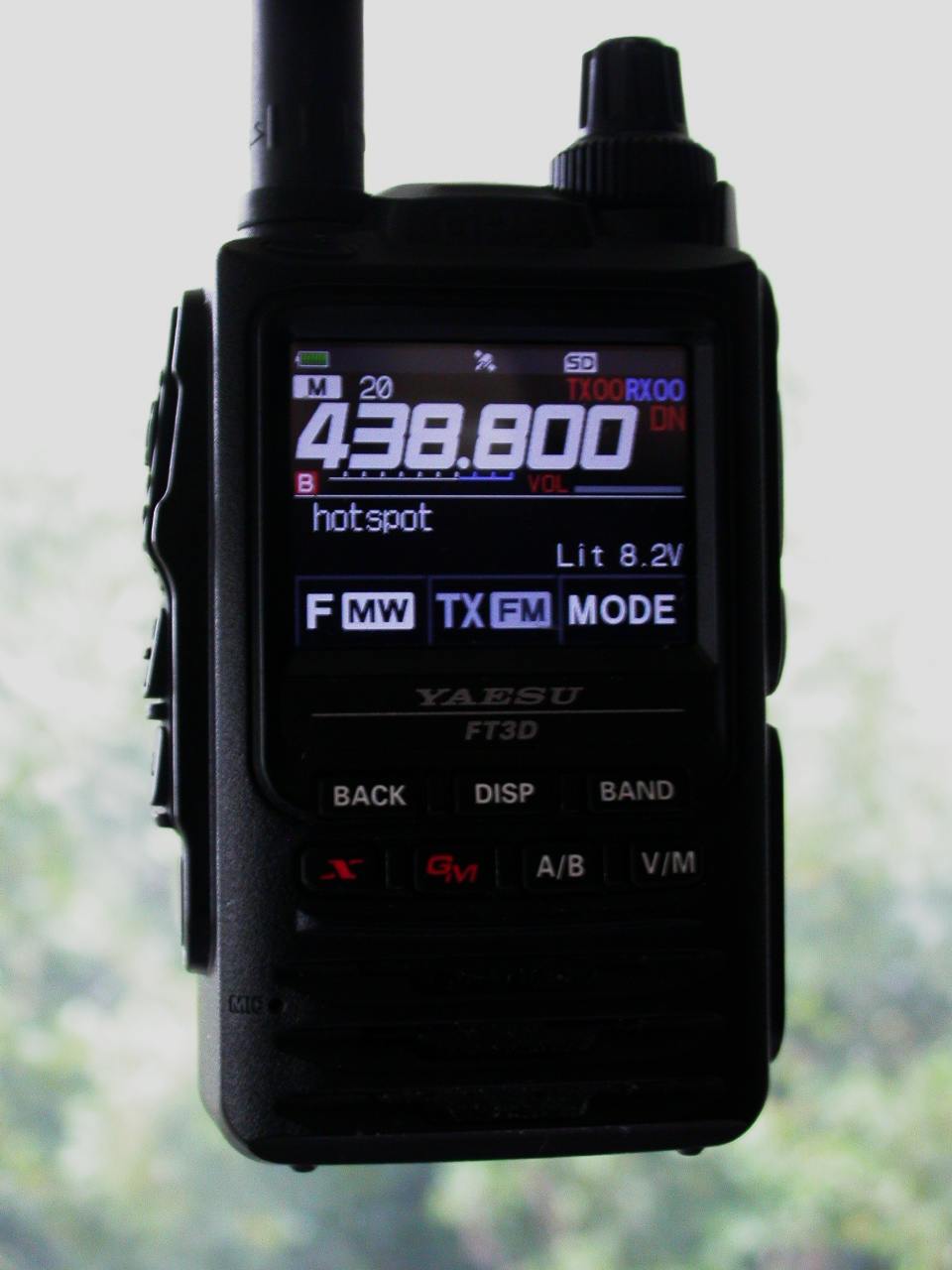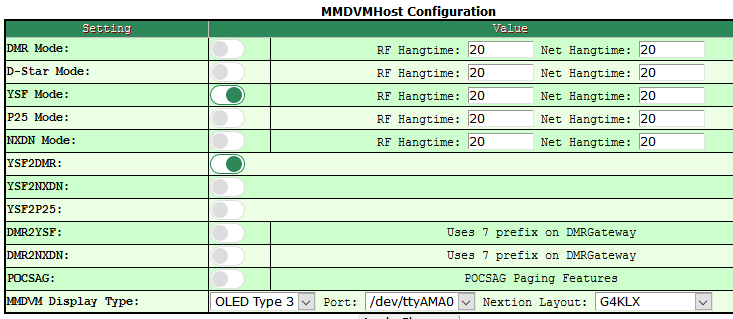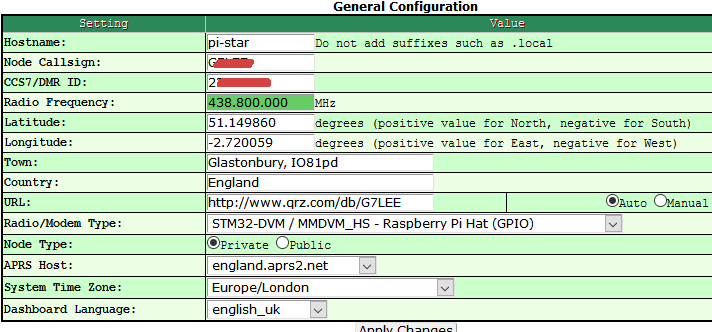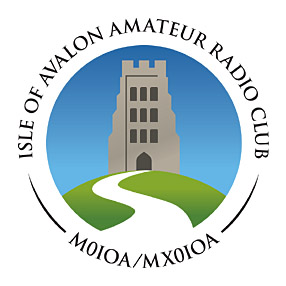Using a Yaesu Fusion rig via a Pi-Start hotspot on DMR for South-West TG810 on GB7FI
Quite a lot has changed with DMR and GB7FI since this was written. The basics are the same
this post updates the Phoenix server details and where you can monitor the connections.
Many members of the club have the Anytone AT878UV DMR/analogue handheld. We’ve been using GB7FI in Cheddar for the occasional net, it covers a wider area than simplex, and GB7FI is easy to get into from Glastonbury using a handheld indoors on low power.
The battle for digital voice supremacy hasn’t been clearly resolved, anyone with Yaesu or Icom digital voice rigs isn’t going out on DMR, though the Fusion/D Star systems they use also employs the awful and proprietary DVSI AMBE codec 1. How we as amateurs allowed ourselves to be stitched up like this beats me, but we did.
DVSI charge an arm an a leg to be able to use their codec, that’s why there aren’t any cheap bottom-end sub £20 DMR/Fusion Chinese rigs like there are for analogue. So if you have paid good money for a rig with digital voice you sure don’t want to pay DVSI another arm and a leg for one on a different digital voice standard.
Before you can progress this, you need to get a unique DMR ID for your callsign. Although you don't have a DMR rig, Pi-Star will take your digital voice signal and put it onto the DMR network for you, so the DMR network needs a number for you to be able to route your signals.
So go get a DMR ID for your callsign here which will take a little while2.

I have trialled this method using a Yaesu FT3DE handheld and a Pi-Star. There is a roughly 0.2s extra latency in the audio, compared to receiving the signal off GB7FI using a Retevis RT84 DMR handheld. It is perfectly functional, however.
Pi-Star to the rescue
Enter Pi-Star. The actual digital voice signal is the same for Yaesu Fusion (on DN mode) as for DMR, so if you could extract the audio and repackage it for DMR and add the routeing information to get it to the relevant talkgroup you could use the rig you already have to get onto the DMR net with other club members. That is exactly what Pi-Star does, along with a whole lot of other stuff, using a Raspberry Pi to control a MMDVM board to de-encapsulate the Fusion voice signal and send it on its way to DMR. Alternatively, it can route your DV signal to any number of other talkgroups, reflectors and other user groups of amateurs. MMDVM acts as your personal repeater, taking your digital voice signal and sending it over the Internet via the Raspberry Pi to inject it into the user group of your choice.
This article looks purely at getting it to take the Fusion output of your Yaesu handheld or FT-991, and put it onto DMR TG810. Check out the Pi-Star website to see all the other good stuff you can do with Pi-Star. Matt 2E0FNT has taken Pi-Star a lot further, while I introduced Matt to Pi-Star using an original Raspberry Pi and MMDVM board Matt is a much more chatty and sociable sort than I am. He has got on board Dan’s 2E0WKS of the Burnham-on-Sea radio club project to build a dual-antenna version on both timeslots which can do a lot more.
What is Pi-Star?
It is a Raspberry Pi board with a MMDVM radio interface board attached to the GPIO. I bought my MMDVM board cheap from China because I already had enough Raspberry Pi boards and didn’t know if this was for me. I was interested in the tech rather than the usage. However, you can buy a prepackaged version which has a Raspberry Pi Zero, a MMDVM board and the software loaded, which easiest way to make it all work.


Setting up Pi-Star to get from Fusion to DMR
I am running Pi-Star 4.1.2/Dashboard 20201117.
Go to Config. Enable YSF (Yaesu System Fusion) because that’s what your radio puts out. And enable YSF2DMR, which takes your DV signal from YSF and encapsulates it into DMR, according to the panel further down the line. Hit Apply changes, which should simplify the configuration panel by turning off all the extraneous guff you won’t use.

Now go to the General Config panel

and go enter YOUR callsign and YOUR DMR ID where the red splodges are, then Apply changes
then go down to Yaesu System Fusion Configuration, where the key DMR stuff is located.
Follow the newer details in this post rather than this part of the config.

Your startup host wants to be YSF00002 - Link YSF2DMR
WiresX passthrough is nice if you are using the hotspot to control YSF destination, it’s not of tremendous help on DMR. You get to change your DMR destination on this web interface - you can’t do it on the radio. Now make sure your DMR SSID is set - those are the extra digits after the DMR ID - it is 01 in this case, this is the only hotspot I run. That’s not so necessary if you only have a Fusion radio, but if you have a DMR rig as well then it will confuse the DMR system not having that set, so the DMR network can tell your Pi-Star hotspot is a separate endpoint to your DMR rig.
Now choose the IPSC2-PhoenixF server. That lets you get to SW TG810 that GB7FI uses, because GB7FI is on the Phoenix network, not on Brandmeister. If you want a Brandmeister TG then you get to wrangle Hotspot Security and would use Brandmeister_2341 server. But that’s not what GB7FI is on. You can see which regional TGs are carried on the Phoenix network repeaters, GB7FI carries TG810 (FI is listed as the Axbridge repeater)
Finally you have to select the talkgroup you want, which is the 810 on the bottom line. Using a hotspot means you aren’t using the repeater - indeed if all participants on TG810 used hotspots then GB7FI would not carry the traffic at all on TS2, unless a listening amateur had keyed up on TG810TS2 to listen to the net (it would timeout on the repeater after a while if no transmissions were made to TG810, leaving TS2 available for other uses).
You can use your local Pi-Star config panel to switch which TG you are connected to
Monitoring activity
You can monitor activity on TG810 here and monitor activity on GB7FI here. Bear in mind it is perfectly normal to have activity on TG810 without it being on GB7FI, and indeed to have activity on GB7FI without it being on TG810!
